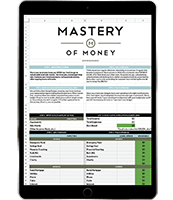Want to know how to get kids interested in stocks? It’s simple, make it all about the stuff they love.
My daughter is a chocoholic. She gets it from her mother (mostly) and if there is chocolate in the house, it’s either hidden in her room or in the farthest spot out of reach for the rest of us. Bags of chocolate chips that reside in the freezer for baking cookies are often half-consumed by the time we get around to making a batch. When cleaning up around the house, it’s not uncommon to find wrappers to miniature candy bars tucked in couch cushions and under rugs. At times the habit has become… problematic.
Yet one day after stopping for gas at our local convenience store and my daughter pleading for a chocolate bar at the check-out, we started a dialogue about Hershey’s and how successful she thought the company was. After all, it was a publicly traded company and we figured that most, if not all people, loved chocolate. Surely they were making decent profit as a company for the shareholders. I even challenged her to guess what the cost to make a bar of chocolate was, plus shipping, marketing, spoilage, etc.
“How much profit is in a bar of chocolate?”
The shareholder talk was relatively new to my daughter (she was around 11 at the time), but when I introduced the idea of her owning a piece of her favorite chocolate company, she was intrigued.
I had been researching Hershey’s as a potential investment for quite some time. One of the financial newsletters that I subscribe to had featured Hershey’s as a great stock because they’re a very capital efficient company. The author of the report said that Hershey’s made nearly 10 times the profit for every dollar invested. So, in simple terms, Hershey’s makes $10.00 for every $1.00 it invests in machinery, marketing, or other capital purchases.
When a company is that efficient, more money invested in the business generates more profit which allows for more to be invested in the company which generates more profit. The growth curve on a company like this can be exponential. Not to mention the fact that, at the time, Hersheys was paying a dividend on shares owned.
My daughter caught on that if she owned a piece of Hershey’s in the way of stock, every time she (or anyone else) bought a candy bar, she could theoretically be making money.
 As a means of teaching my kids to value money, they’ve received a weekly allowance for quite some time. 10% of their allowance goes to giving, 10% to saving, and 10% to investing. The remaining 70% is theirs to do with as they please. With the 10% earmarked for investing, I searched high and low for an affordable stock trading platform with low fees, allowed partial shares of stock to be purchased, and an easy-to-use interface for kids.
As a means of teaching my kids to value money, they’ve received a weekly allowance for quite some time. 10% of their allowance goes to giving, 10% to saving, and 10% to investing. The remaining 70% is theirs to do with as they please. With the 10% earmarked for investing, I searched high and low for an affordable stock trading platform with low fees, allowed partial shares of stock to be purchased, and an easy-to-use interface for kids.
Stockpile.com fit the bill.
Each month the kids deposit their invest jar money in their stockpile accounts, and as a means of teaching them that when you invest your money grows, I will match their invest money up to $25 a month. So, there are months when my children are putting $50 away in their stockpile accounts. One month of this behavior will (currently) buy ½ of 1 share of HSY.
(I wrote an article about our allowance program that you can read HERE, and have built an entire course that teaches how to Raise Kids Who Thrive With Money. You can find out about the course HERE.)
Here’s where things get interesting with kids: The first few transactions are interesting, although not entirely thrilling or exciting. But when the first dividend transaction comes through, and a very big deal is made of the fact that your money just MADE money, now they’re willing to pay a little more attention.
What your child is into could be what helps them retire
My two sons went in slightly different directions. One is more into pizza and gatorade while the other was totally infatuated with Minecraft. Luckily, Casey’s (CASY) is a convenience store that sells gatorade as well as amazing pizza, and Minecraft was purchased by Microsoft (MSFT). The two of them are slowly building their stock portfolios with these companies teaching them the ropes of dividends, stock buybacks, and a fluctuating market.
But what matters more than how many shares they have is how many they could acquire over the lifetime of holding the stock. There have been several books written on the subject of buying dividend paying stocks, particularly as a young person, and reinvesting those dividends in additional stock purchases. Typically called a DRIP (Dividend ReInvestment Program), many of these companies will allow you to buy straight from them and reinvest the dividends in more stock every time they’re paid out.
Warren Buffett famously bought over $1B worth of Coca-Cola (KO) stock in the 1980s and held onto it knowing that it was both capital efficient AND that it paid a handsome dividend. In a letter to Berkshire Hathaway shareholders in the early 2000s, Warren wrote that KO paid them a dividend that year that surpassed what was originally paid for the stock in the beginning. His investment in KO had grown (with dividends) at an annualized rate of 11% a year.
Imagine what happens when your child starts buying stocks like Amazon or Google, or even more mundane stocks like Hershey’s and holds them forever.
By the way… I couldn’t find an exact number for the profit on a single Hershey’s bar, but the bar is listed as the 4th most profitable chocolate behind Snickers, M&Ms, and Reese’s Peanut Butter Cups (owned, incidentally, by Hershey’s).
Why I like Stockpile.com instead of other platforms
There are really two main reasons that I chose the Stockpile platform to build my kids initial stock holding accounts:
- The transaction fees are ridiculously low. For 0.99 a transaction, you could be buying and selling stocks right now. This is a way better deal than paying 4.99, 6.99 or more through Etrade, Scottrade, or any of the other myriad platforms out there. With a $100 transaction, your expense is 1% on stockpile, but could be as much as 7% with Etrade. The smaller the transactions, the more important it is that your expenses are kept low.
- You can buy fractional shares of companies. When smaller amounts are being invested, it’s nice to be able to invest only what you have and not have to wait for a few months to buy one WHOLE share. Those half of and third of a share will add up over time.
Stockpile will prefund your account with the first $5 investment just by clicking THIS LINK. Consider passing the link onto your friends and family — it’s essentially unlimited usage. (Though the $5 account is attached to your SS#, so only one account per person.)
So, what are you waiting for? Let’s get those kids started in Stockpile with their first 5 bucks and get them excited about building a portfolio for the future!




